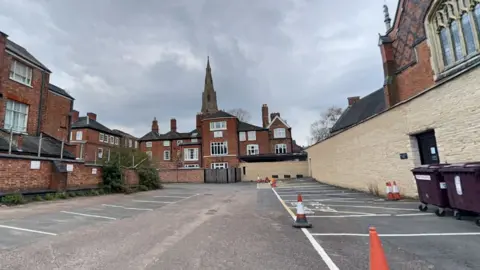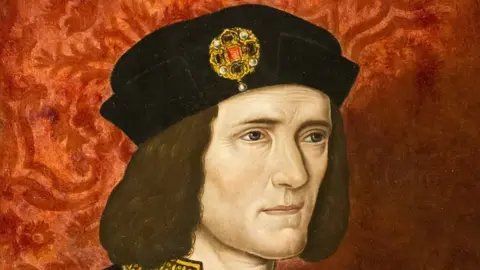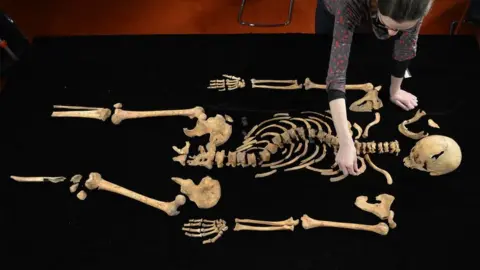Richard III car park fails to sell at auction
 Google
GoogleThe car park where King Richard III's remains were discovered a decade ago has failed to sell at auction.
The monarch's bones were unearthed in 2012 under a social services car park in Leicester.
While the king's grave itself is now preserved in a visitor centre, the rest of the site - and adjacent offices - went under the hammer on Wednesday.
However Leicester City Council said no bids were made at the lot's reserve price so it remains unsold.
The council said it was now considering "other options" for the site.
The auction was held in private but bidders were advised the guide price for the site, which included a large block of Grade II-listed four-storey office buildings, was £4m to £4.1m.
 Reuters
ReutersIt is not known what the highest bid was.
A city council spokesperson said: "The property wasn't sold at auction and we are now considering other options."
The car park itself is a Scheduled Ancient Monument and that status protects it from unauthorised development
But Leicester's city mayor Sir Peter Soulsby had said the adjacent Grey Friars building might be renovated for office, hospitality, or residential use.
He previously said: "The Grey Friars building has so much history and it's a stunning building.
"Whilst the building is part of our history and heritage, I'm looking forward to seeing the next stage of its evolution."

Richard III, England's last Plantagenet king, lost his crown and his life when his army was defeated by the forces of Henry Tudor in the Battle of Bosworth in 1485.
For centuries his body was thought to have been lost.
However research pointed to a potential burial spot under the car park.
The city council and University of Leicester archaeologists excavated the site which had been a friary until its demolition in 1538.
Richard's remains were subsequently interred in the city's cathedral a short distance from where they were discovered.

Follow BBC East Midlands on Facebook, on Twitter, or on Instagram. Send your story ideas to [email protected].
